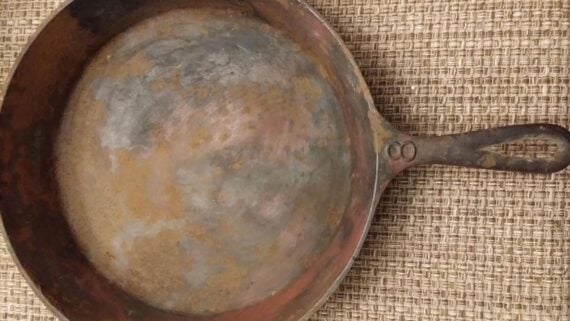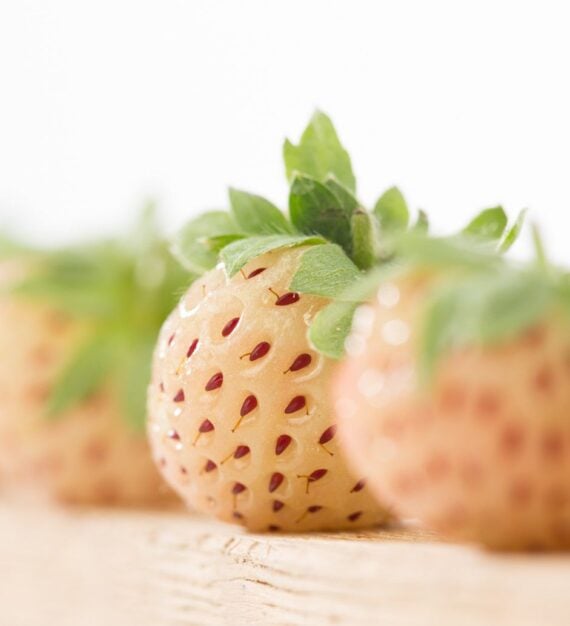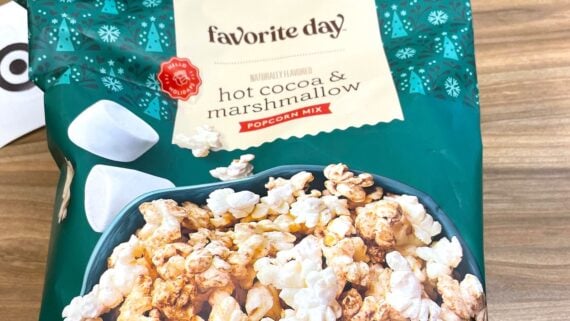I am no longer allowed to use the cast-iron skillet in my house. There, I said it. I’m a grown woman who’s had so many near attempts at ruining the pan that my chef husband finally said, “no more!” But in my defense, I read that cast iron is practically indestructible — the kitchen equivalent of a tank — so common sense be damned. I’ve learned the hard way that while it’s one of the most durable and useful pieces of kitchen gear, there are a couple of no-nos to remember, and you need to give it proper care.
Why Is Seasoning Important?
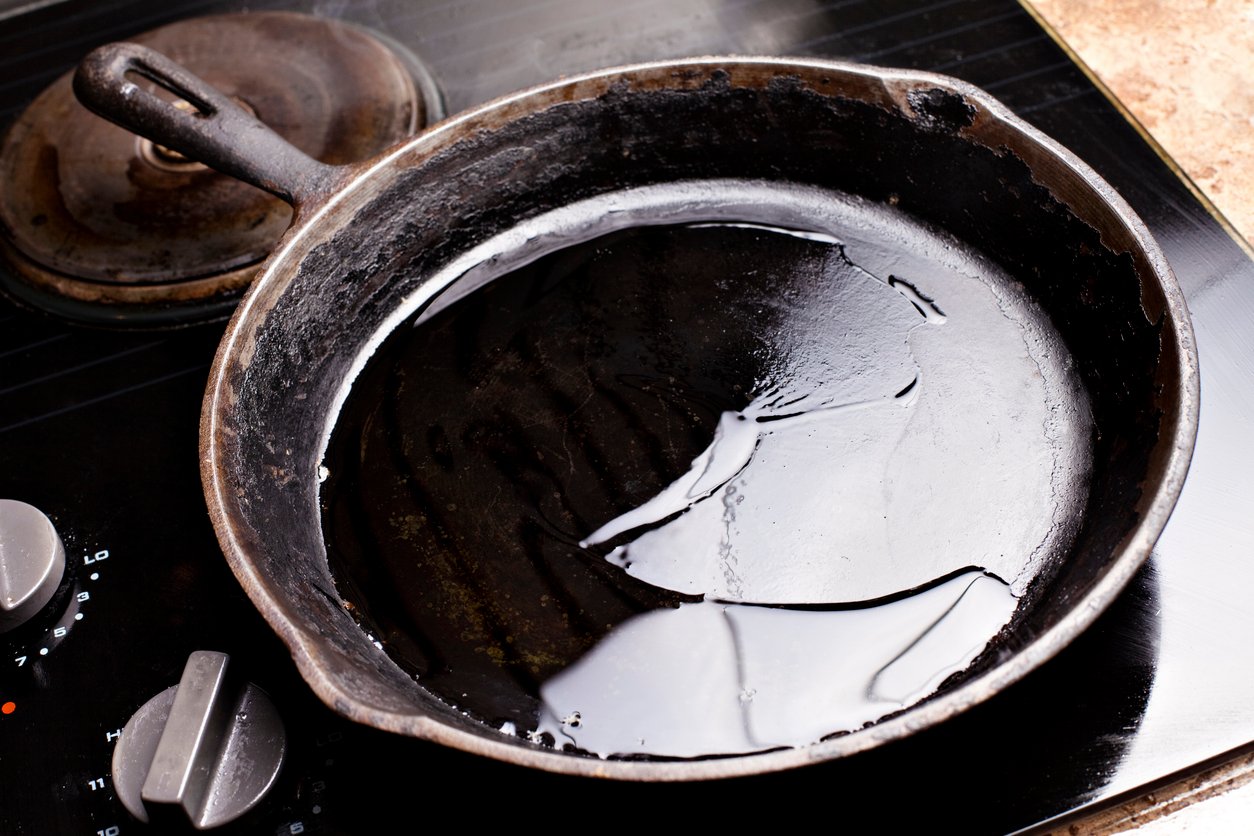
Shortly after we got the cast-iron skillet and cooked something in it, I thoroughly scrubbed the pan, washed it, and left it to dry with the rest of the peasant dishes. Oblivious to the fact that I’d end up with an almost eroded pan, it didn’t cross my mind that the pan’s bare iron needs grease to protect it from humidity, which of course causes erosion.
New cast irons come with what’s called a factory seasoning — a thin oil coating baked on before shipping. It’s a starter layer that keeps the pan from rusting in the box, but it’s nowhere near the nonstick surface you get after months of use. Seasoning is what makes a cast-iron skillet usable, nonstick, and durable. It’s a layer of hardened oil that forms when fat is heated past its smoke point and bonds to the surface.
Every time you cook with oil or grease, that layer gets thicker and smoother. It turns rough, porous iron into a slick, protected surface. Good seasoning takes time and builds gradually through use and proper care — but once you have enough, your food will brown and crisp like a champ.
Which Foods Are Great for Cast Iron?
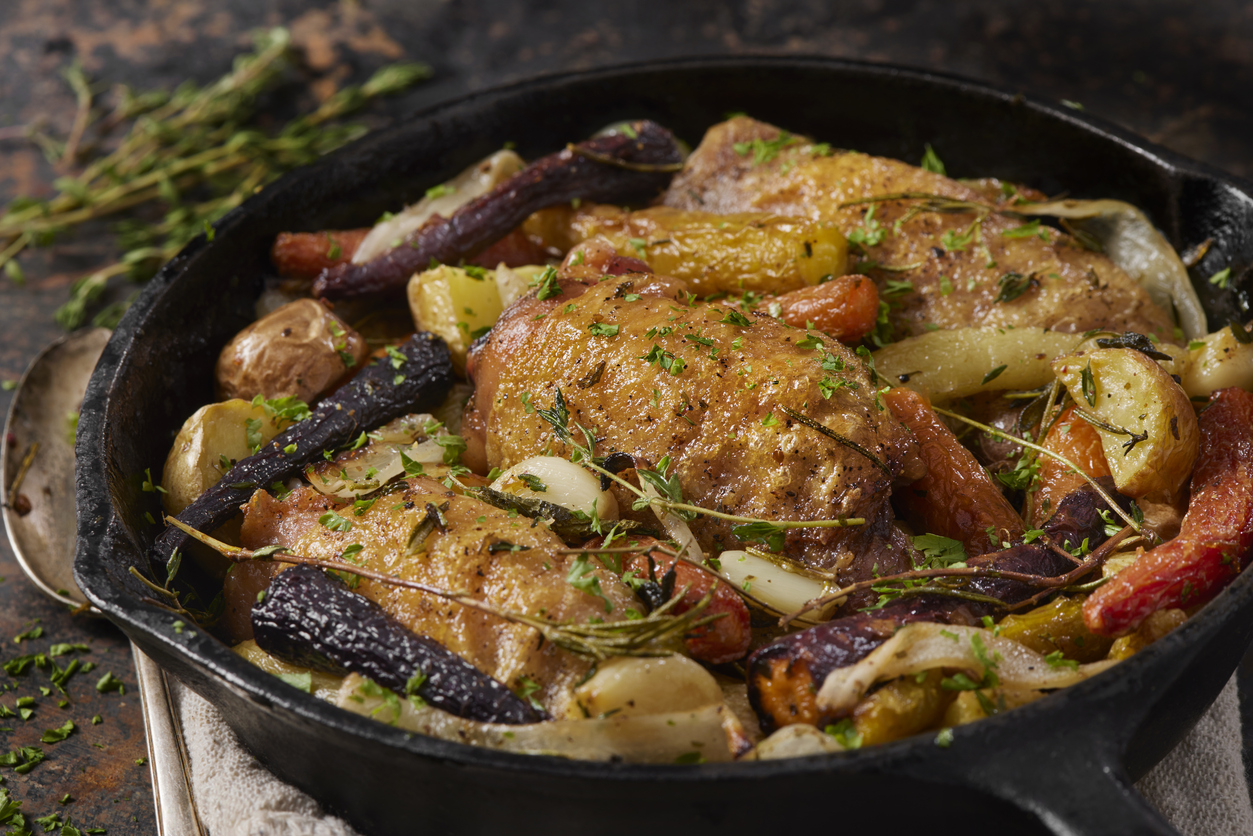
Since its a solid piece of iron, a cast-iron skillet holds heat longer than almost anything else, which makes it perfect for high-heat cooking. Once it’s hot, it stays hot. That’s why steaks sear beautifully and cornbread gets that crispy edge. It’s also oven-safe, so you can move it straight from the stove to the oven without worrying about melting handles or warping. It’s great for searing meat, roasting vegetables, baking cornbread or deep-dish pizza, and frying anything that likes consistent heat — chicken, potatoes, you name it. But it’s not great for other things.
Foods That Can Damage Your Cast Iron Skillet
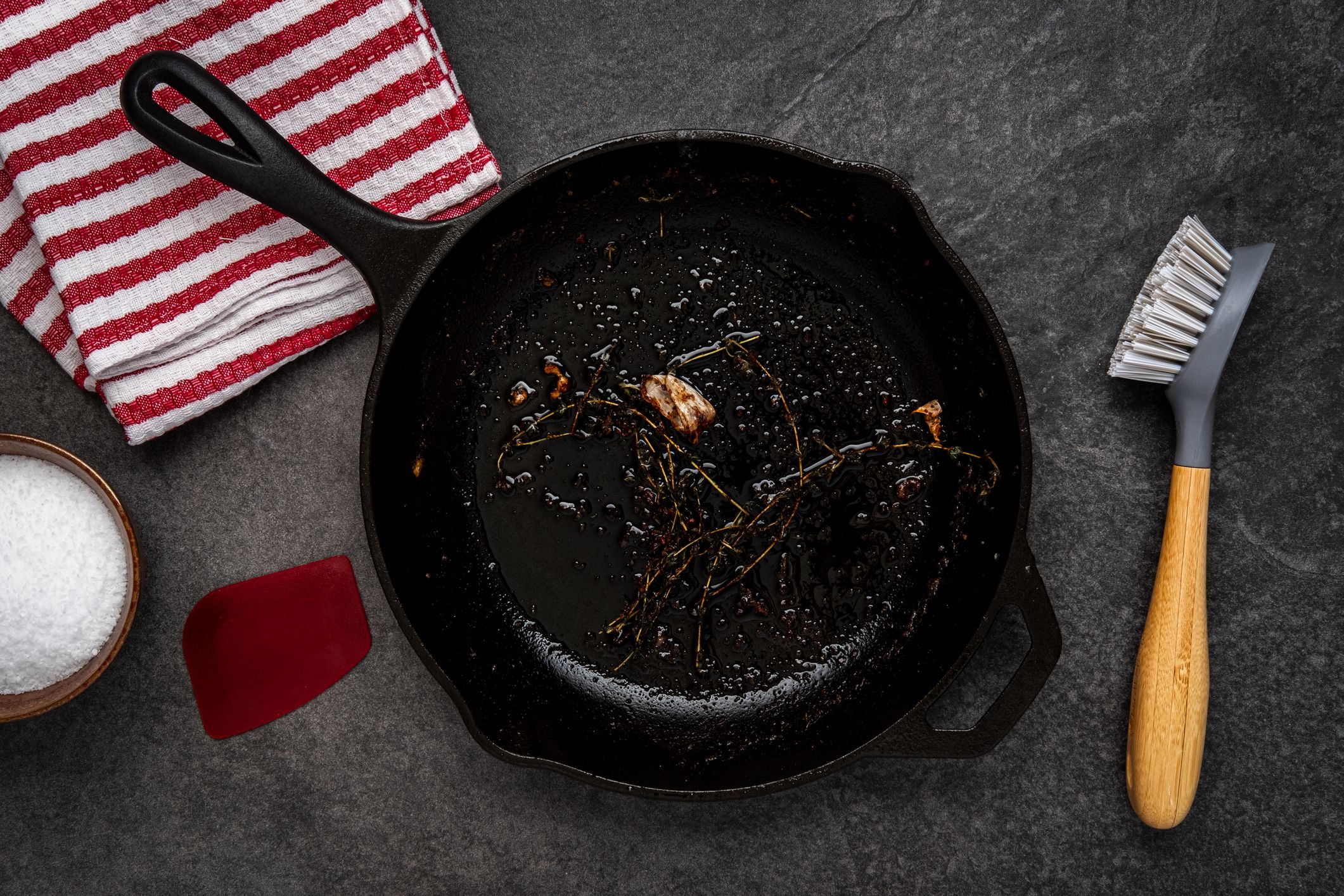
Eggs
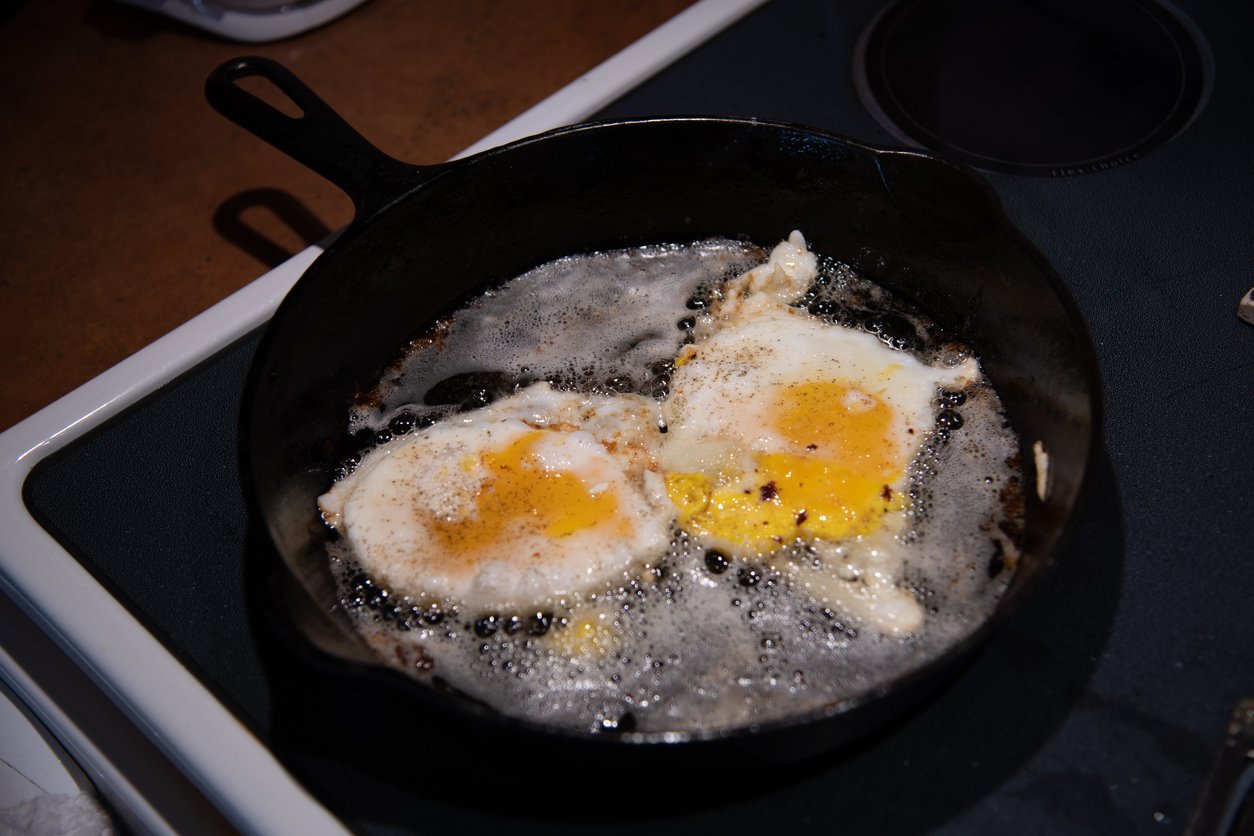
This rule applies to cast iron newbies. For the first couple of months, your skillet won’t be well seasoned, and sticky foods like eggs will cement themselves (good luck scraping them off!). Eggs — fried, scrambled, or omelet — cook fast and need a true nonstick surface. With time, when your pan has been seasoned enough, it can handle an omelet. Until then, stick to stainless steel.
Acidic Foods (Tomatoes, Citrus Juice, Wine)

This was my second warning. Shortly after we got the cast iron, I cooked shakshuka — a dish that famously consists of tomatoes simmering for a long time. Acidic foods or recipes heavy on tomato, wine, citrus juice, or vinegar that simmer for more than 15 minutes will damage the cast iron and ruin your dish. Acid and heat eat away at the seasoning of the pan, exposing the bare iron to oxygen and some of the remaining acid and eroding it, causing pitting and leaving your tomato sauce with a metallic taste. For long-used cast iron that has a thick seasoning from all the fat, occasional quick cooking won’t hurt it, but prolonged exposure does. The longer the acid sits, the faster that cycle of erosion kicks in.
Trending on Cheapism
Delicate Fish
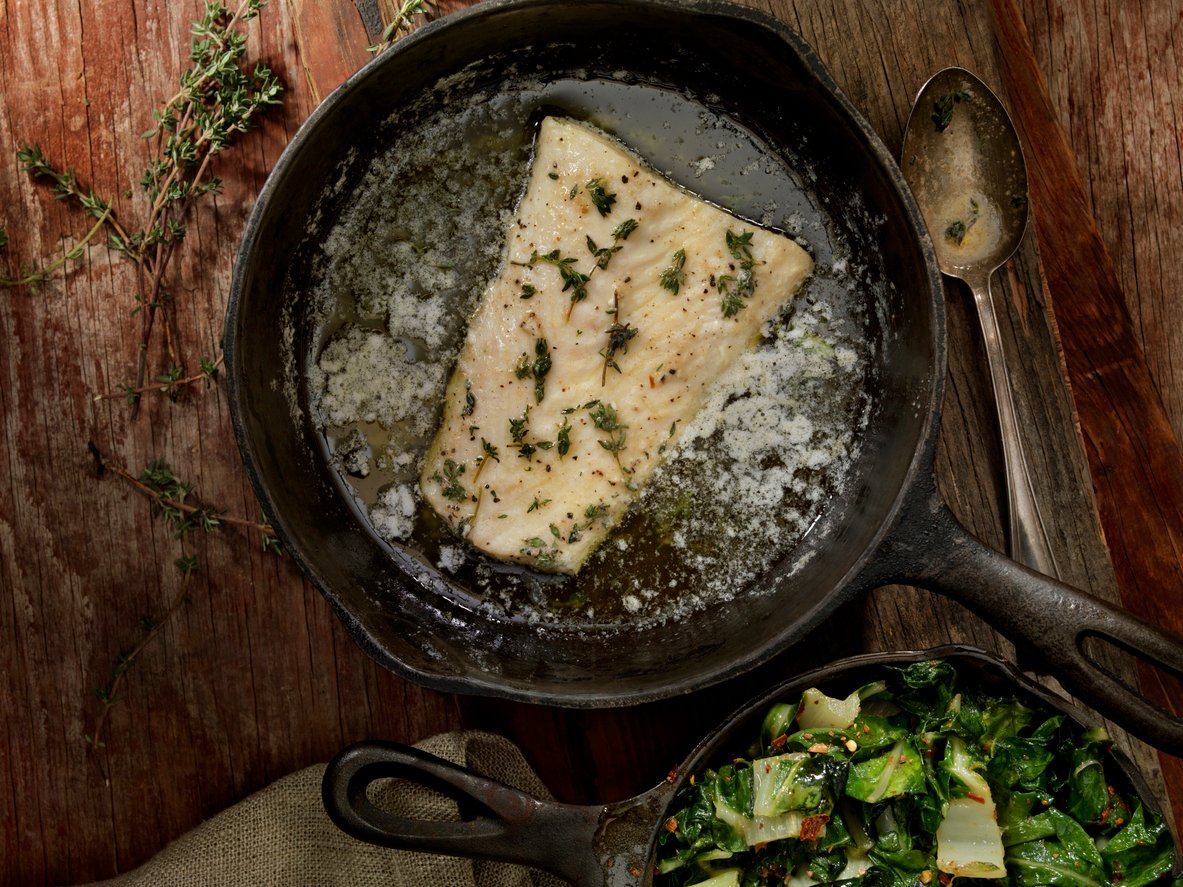
The rule of thumb when choosing what doesn’t go in your cast iron should be: If it cooks too fast or too long, use another pan. Flaky fish like tilapia, cod, and flounder — and fish in general — cook fast, and on high heat they’ll stick like glue. You’ll lose half your dinner to the pan and spend the next 20 minutes scraping.
Sweets
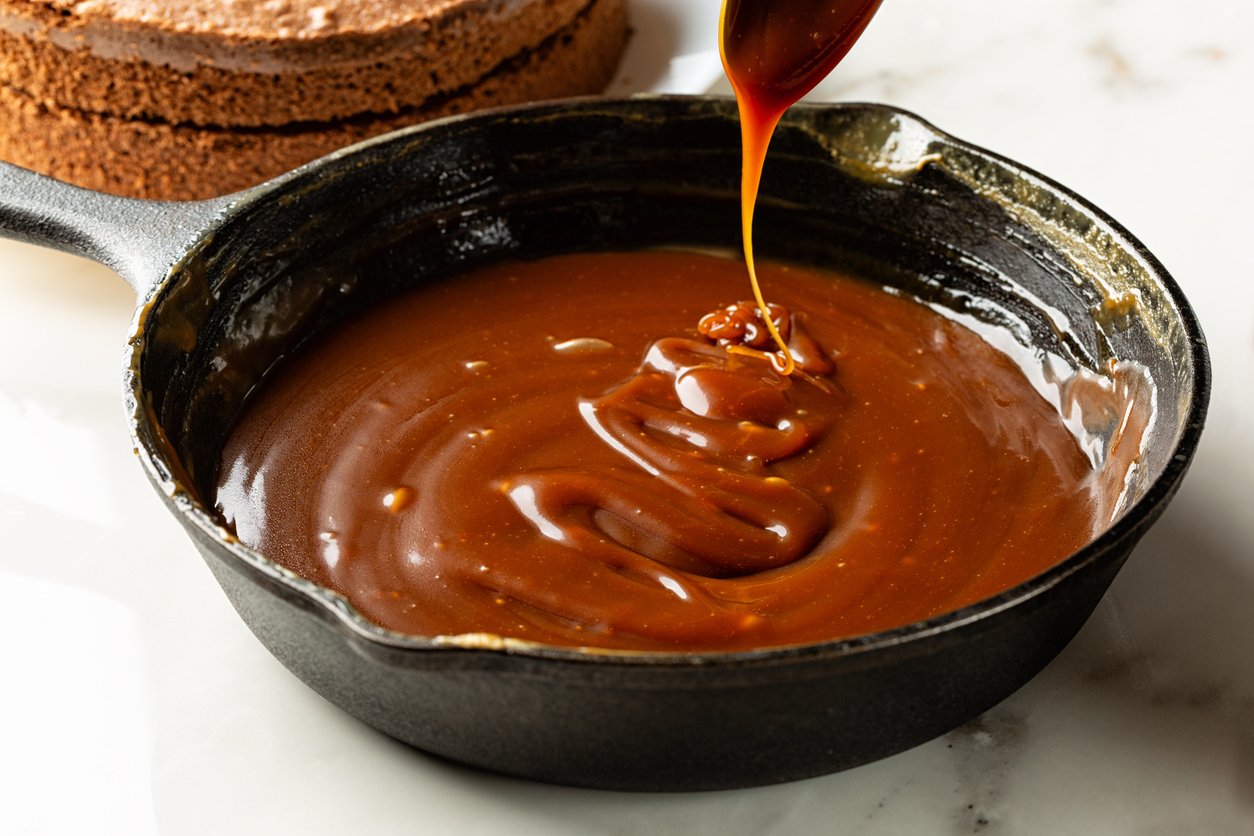
You can bake in a cast iron — plenty of people make cobblers and skillet cookies that come out great — but caramel-heavy desserts are another story. Anything with a lot of sugar, syrup, or sticky fillings will cling to the pan and tear up the seasoning when you try to get it out. Sugar burns at high heat and will create a crust that fuses with the surface. That’s a nightmare to clean, and it can strip off months of careful seasoning in one go.
Dishes With a Lot of Liquid
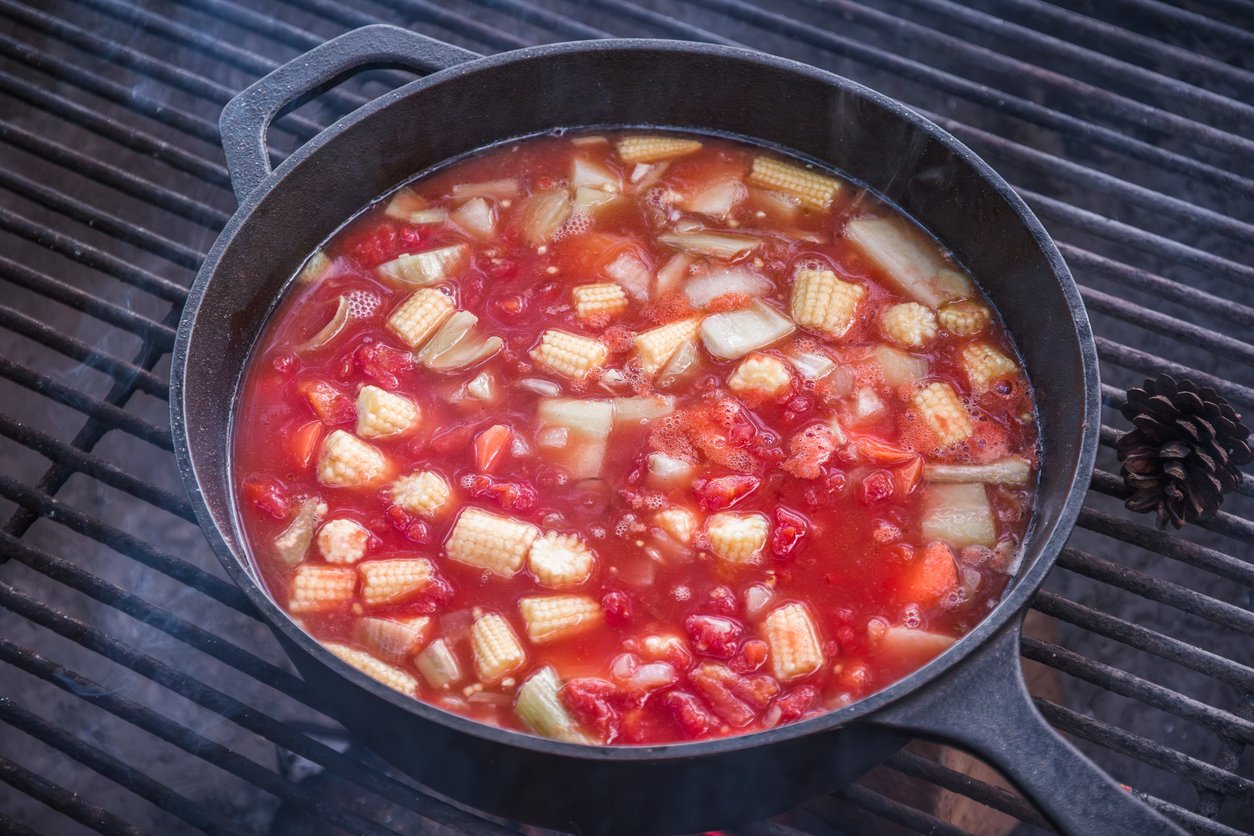
Cast iron doesn’t like sitting in liquid. Long braises, soups, or stews might seem fine while they’re cooking, but the moisture and acidity slowly break down the seasoning layer. Leave it in too long, and you’ll notice dull spots or patches of rust forming where the coating used to be. It’s not the end of the world, but it means more work later to reseason.
Have any other tips for keeping your cast-iron skillet in pristine shape? Let us know in the comments!
